Nvidia GeForce GTX 1060 6GB Review
Rise of the Tomb Raider, The Division & The Witcher 3
Rise of the Tomb Raider
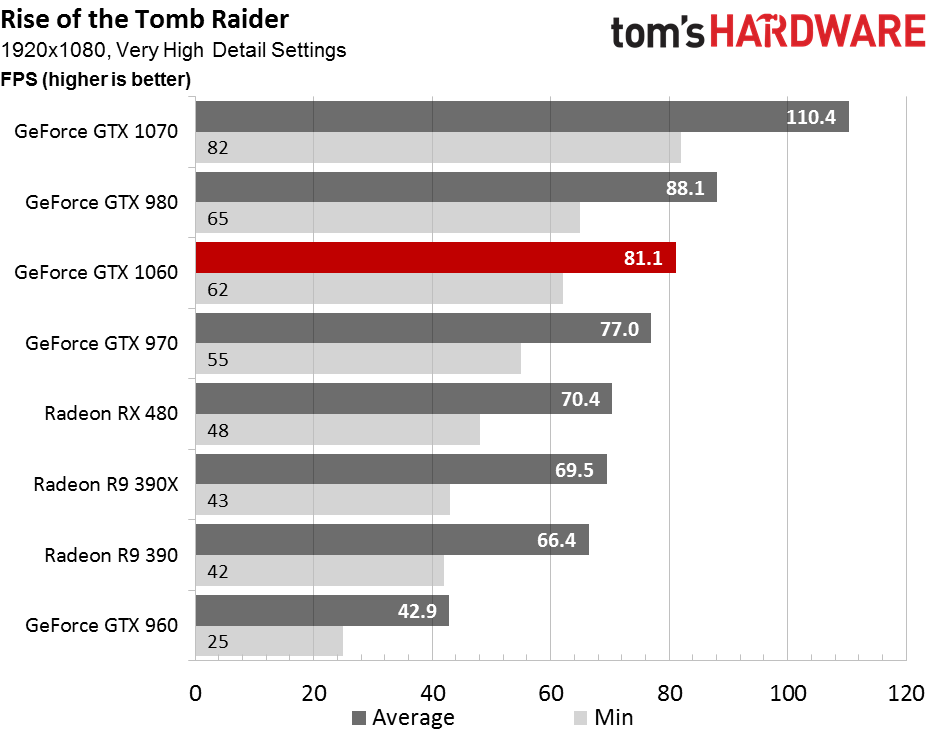
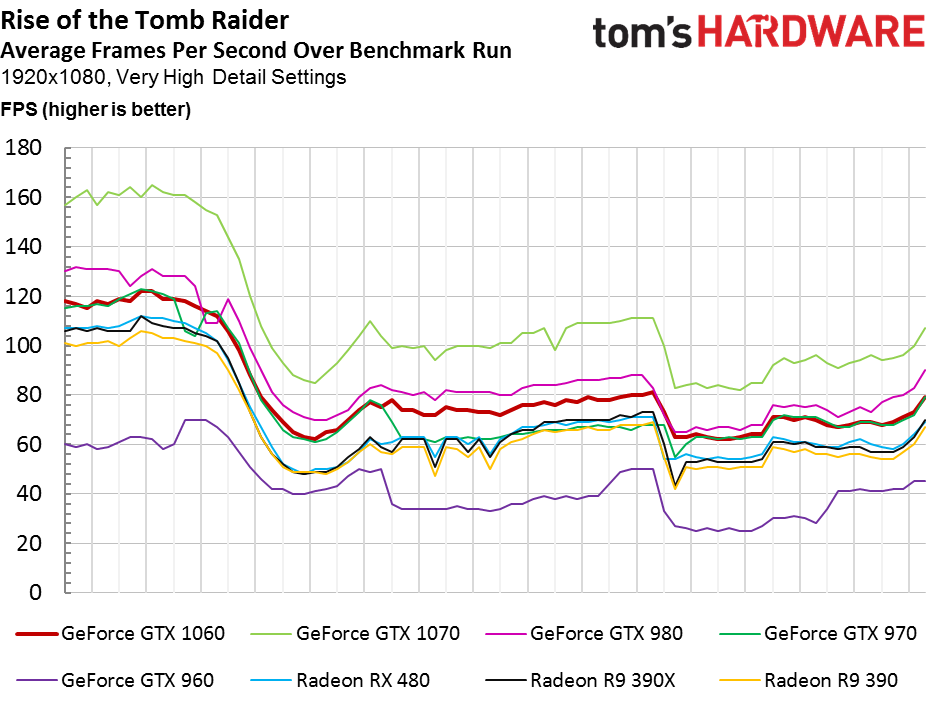
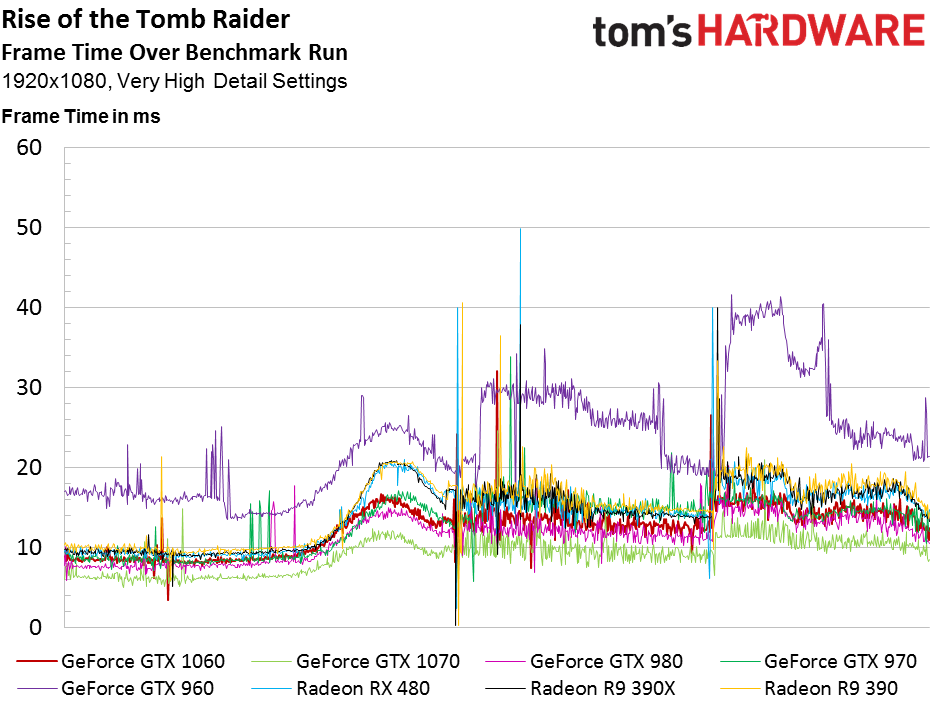
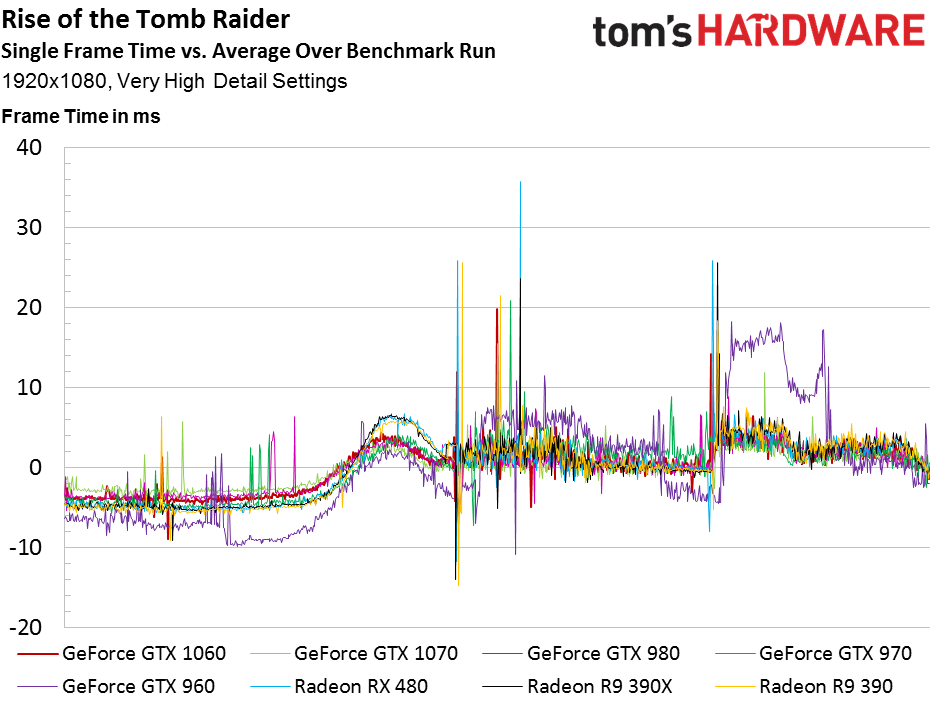
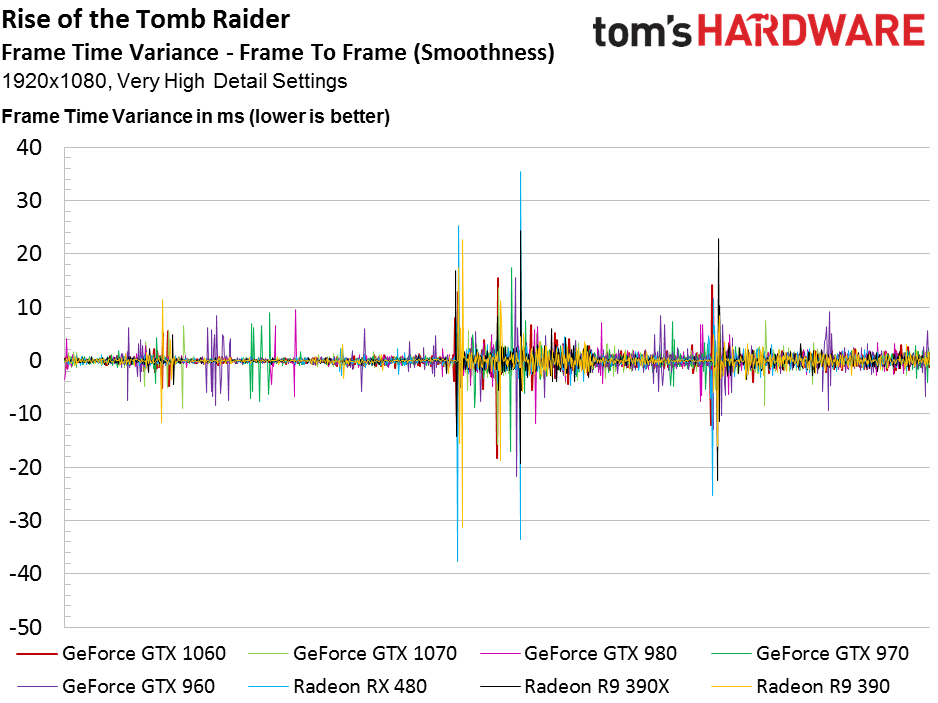
Count Rise of the Tomb Raider as another game that cleanly separates the GeForces and Radeons in our comparison field. Again, GTX 1060 shows up in between the 970 and 980.
As an aside, the RX 480 beats last-generation’s Radeon R9 390 and 390X, but trails the GTX 970. Given the pricing of both boards currently, that’s fitting, we’d say.
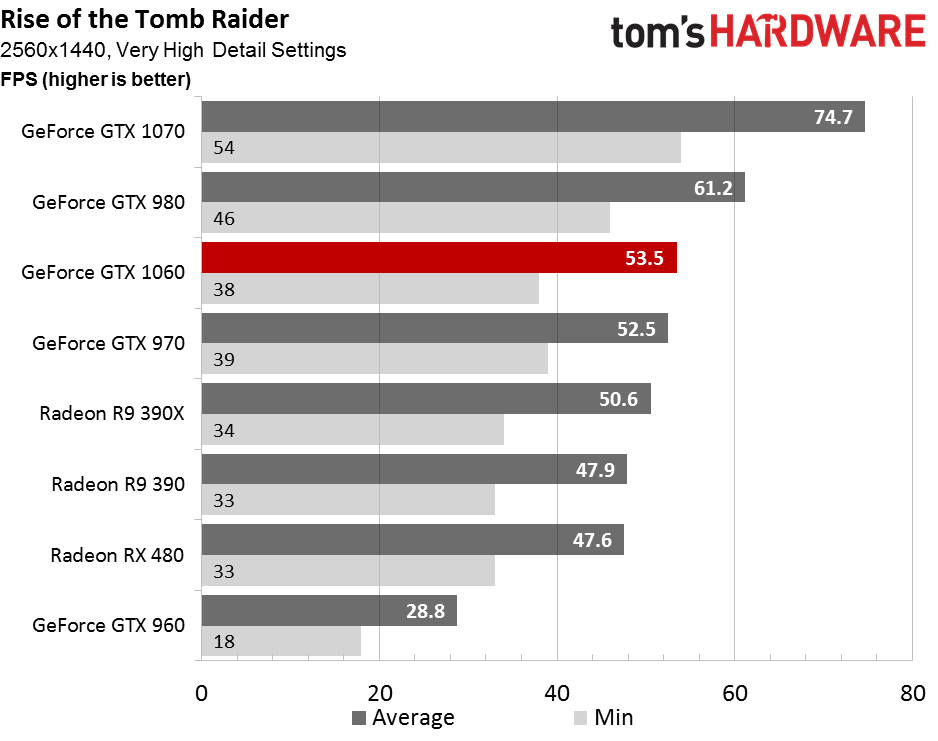
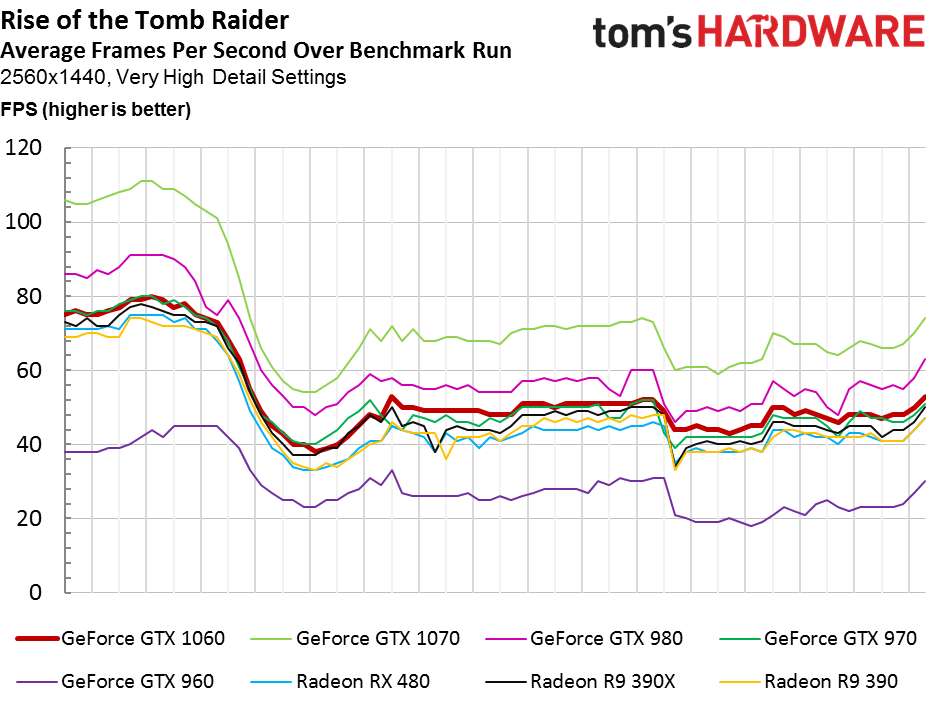
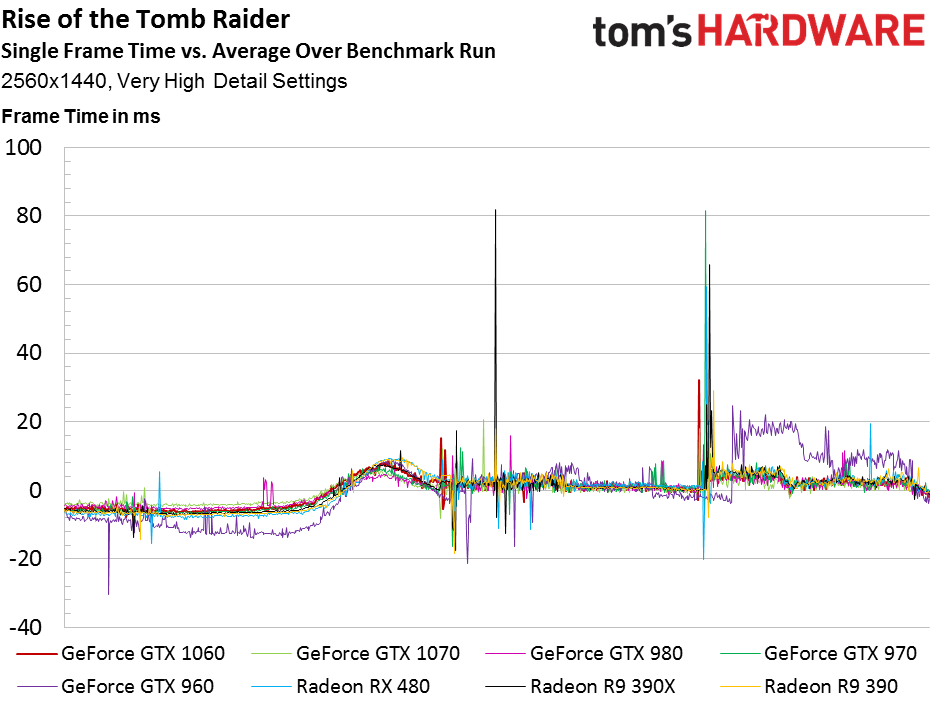
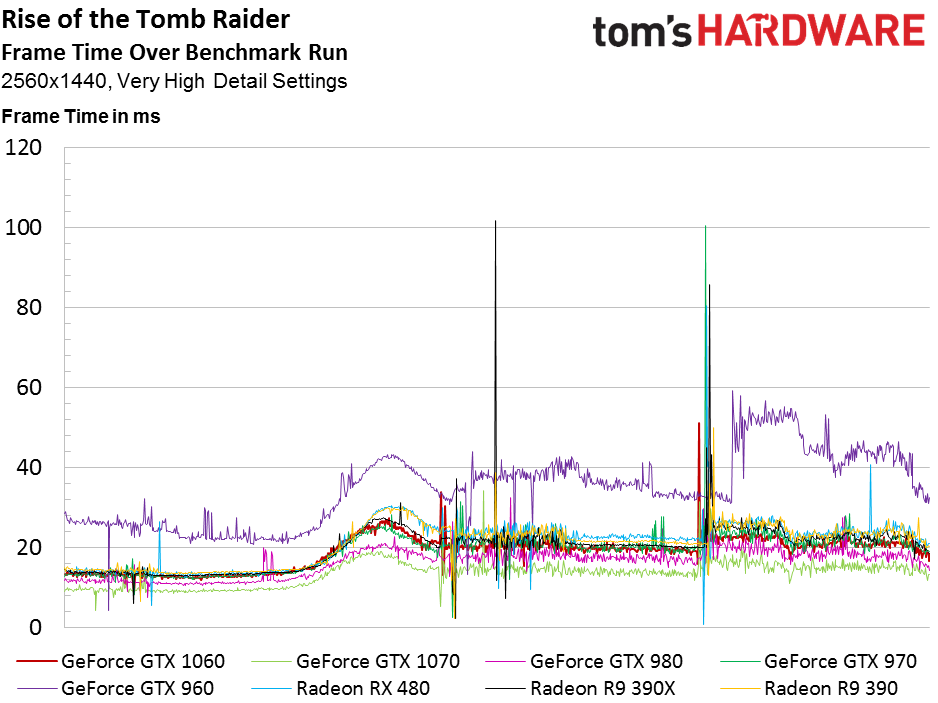
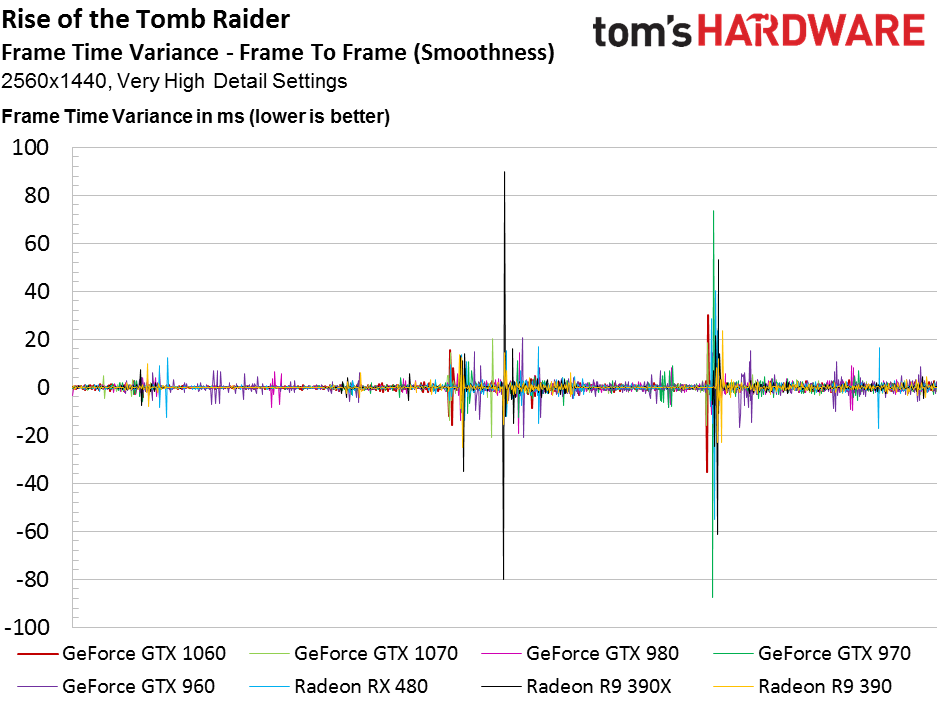
Higher resolutions tax the GP106 processor and its more mainstream configuration. As a result, the 1060 behaves more like a GeForce GTX 970 at 2560x1440 than the 980 we were hoping to see it beat. Still, you’re able to enjoy a playable experience using Tomb Raider’s highest detail settings.
For readers who asked about testing under DirectX 12 in our Radeon RX 480 review, we’ll reiterate: this feature is of questionable utility. In a contrived benchmark (GeForce GTX 1080 down at 1920x1080), we go from 132 FPS to 135 using DirectX 12. However, the jump to 2560x1440 increases the graphics workload enough to actually push the frame rate down.
The Division
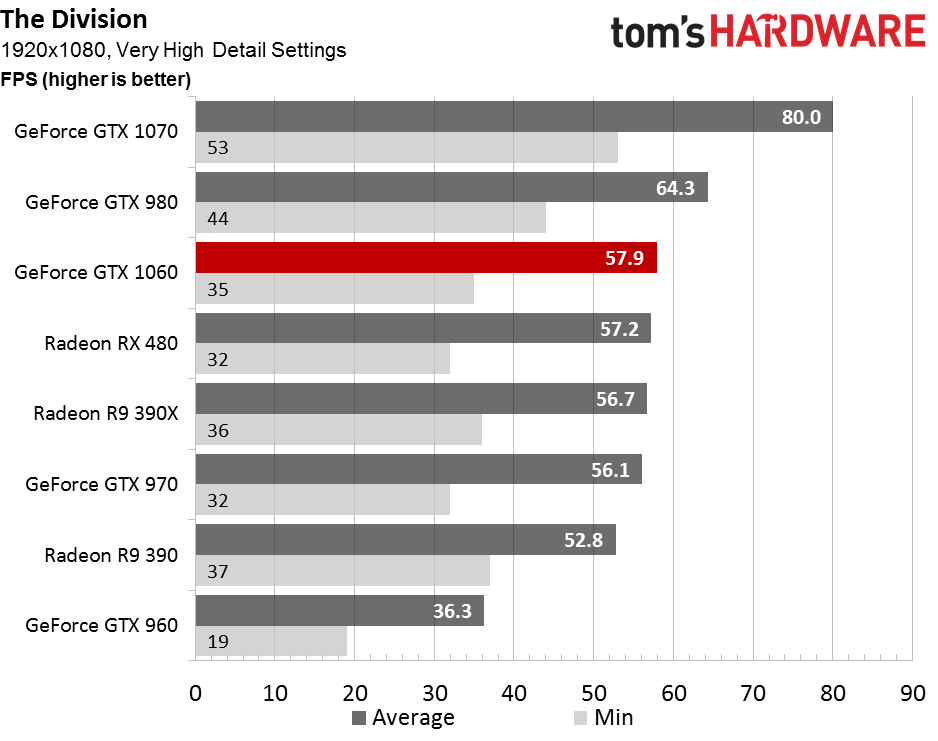
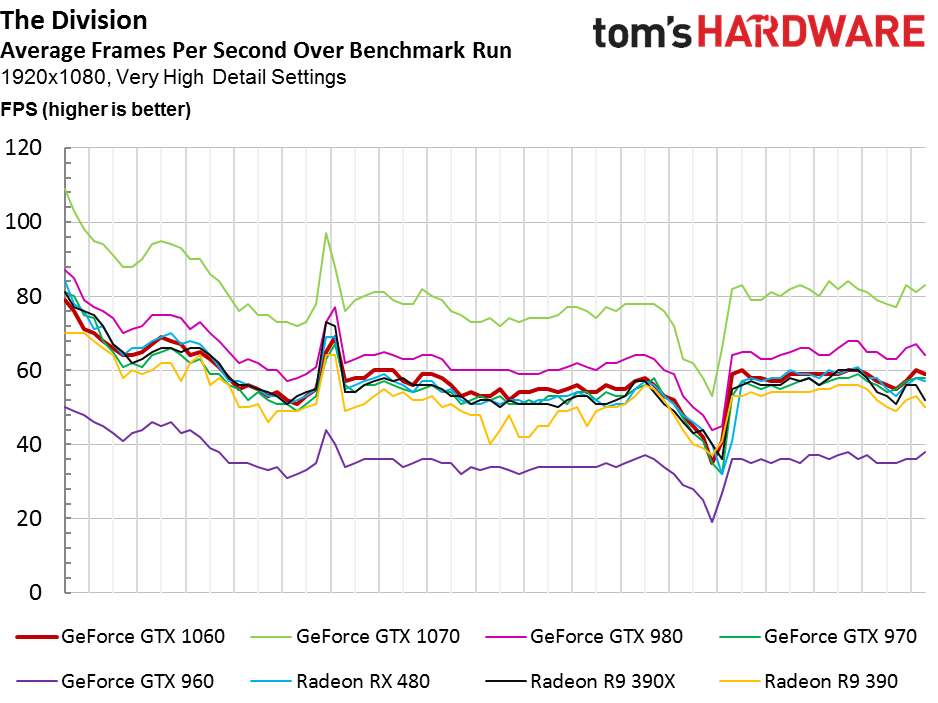
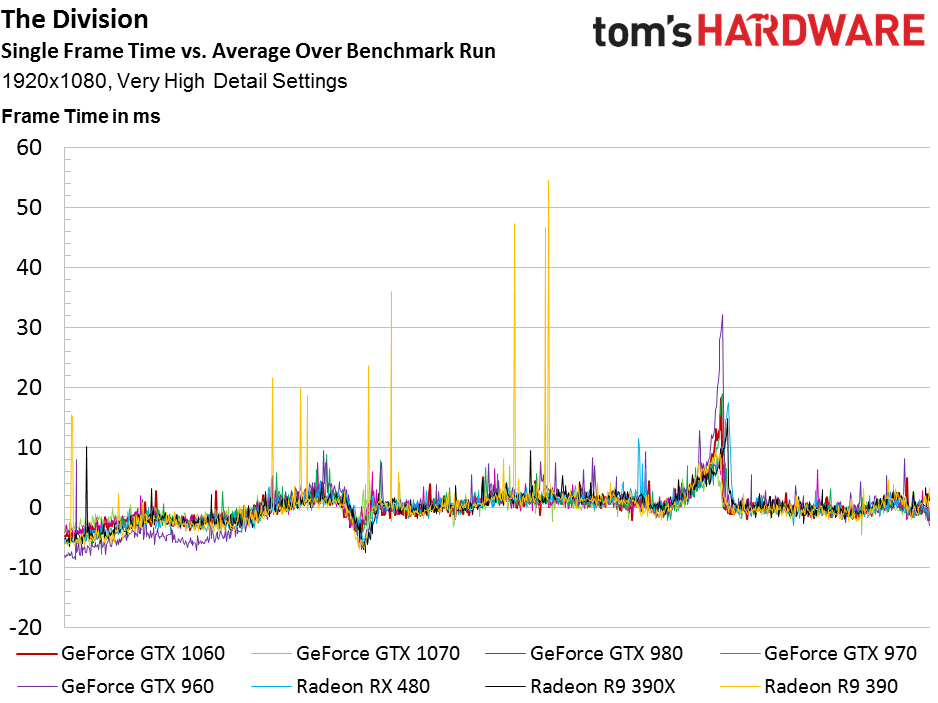
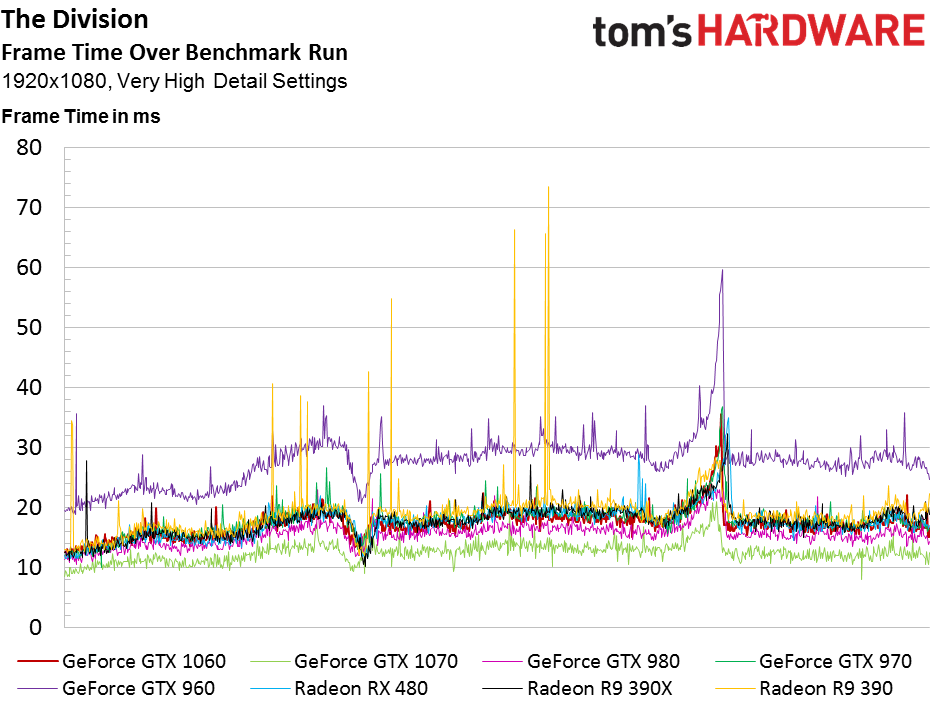
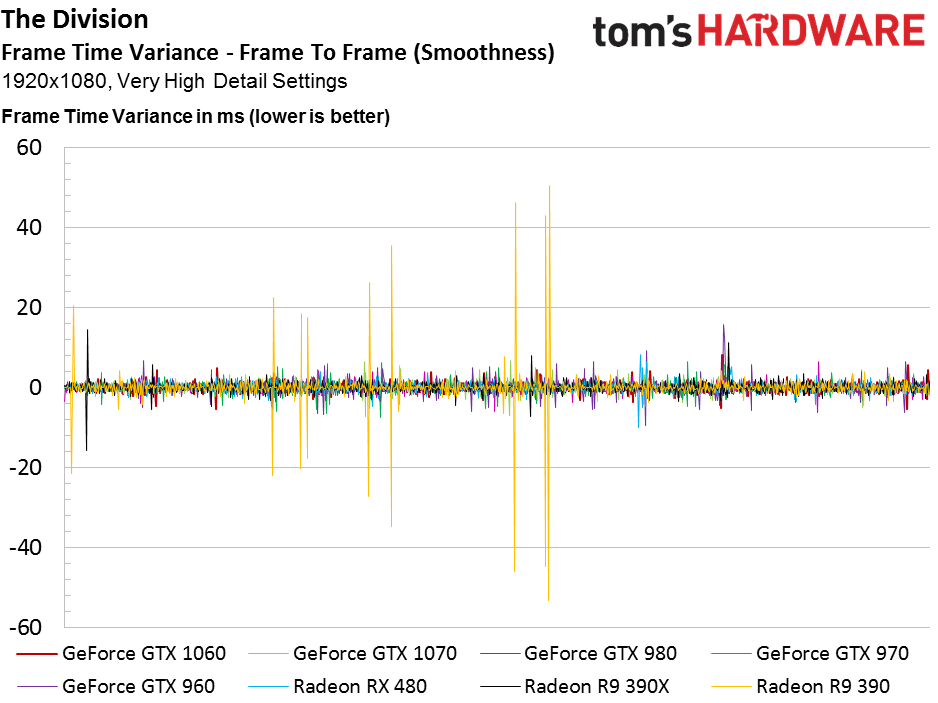
The GeForce GTX 1060, Radeon RX 480, Radeon R9 390X, and GeForce GTX 970 all post very similar results in The Division at 1920x1080 using Very High detail settings. AMD’s Radeon R9 390 isn’t far off either, but it demonstrates sharp frame time variance spikes that affect smoothness through the benchmark. Yet again, we see the 1060 act more like a GeForce GTX 970 than a 980.
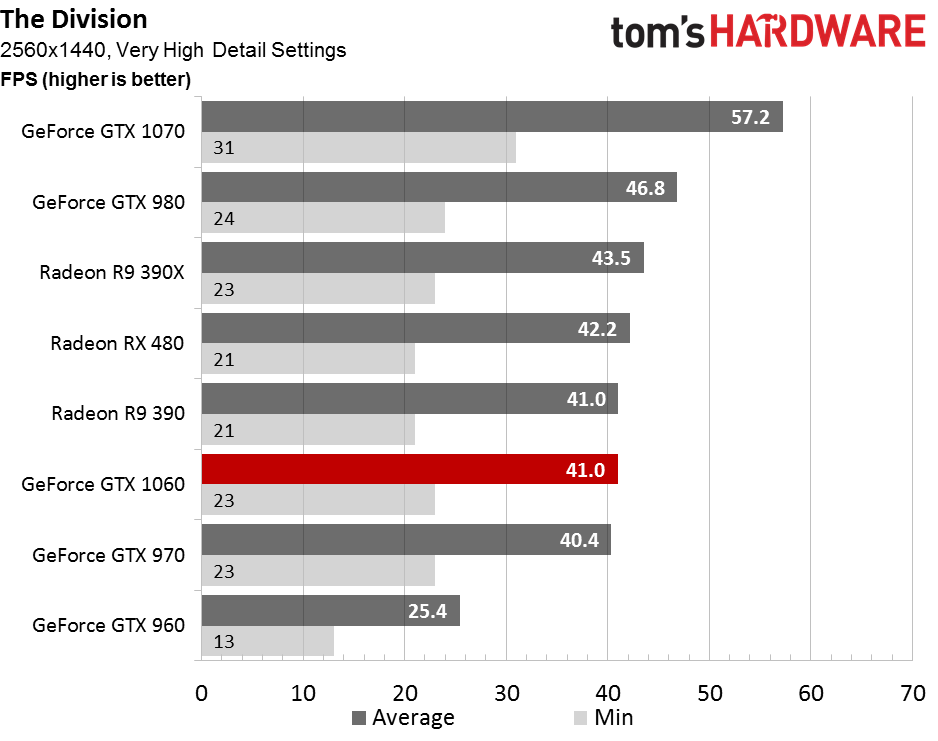
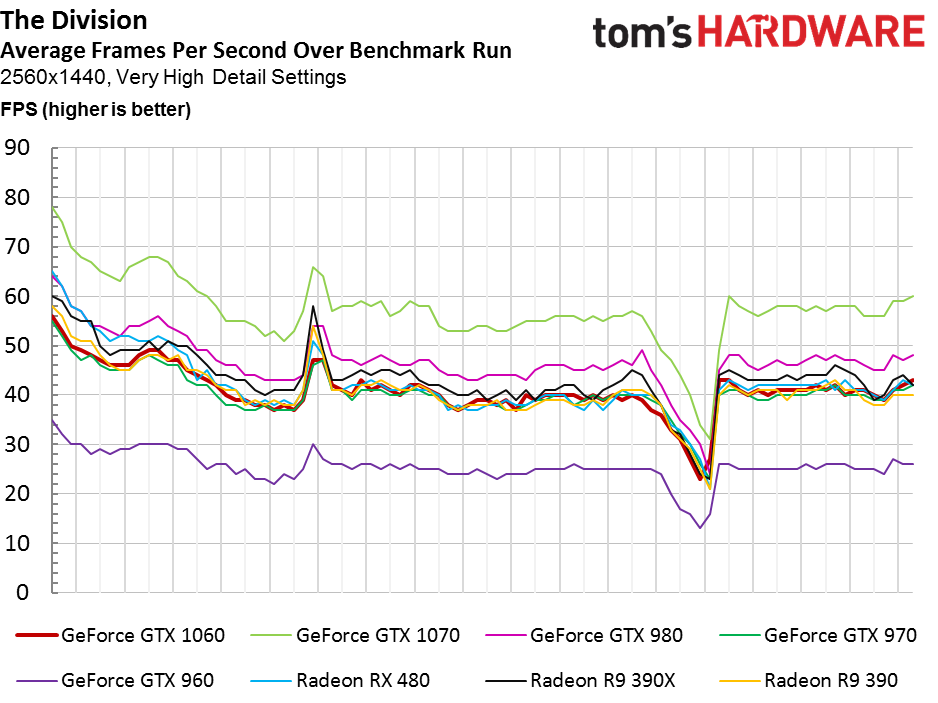
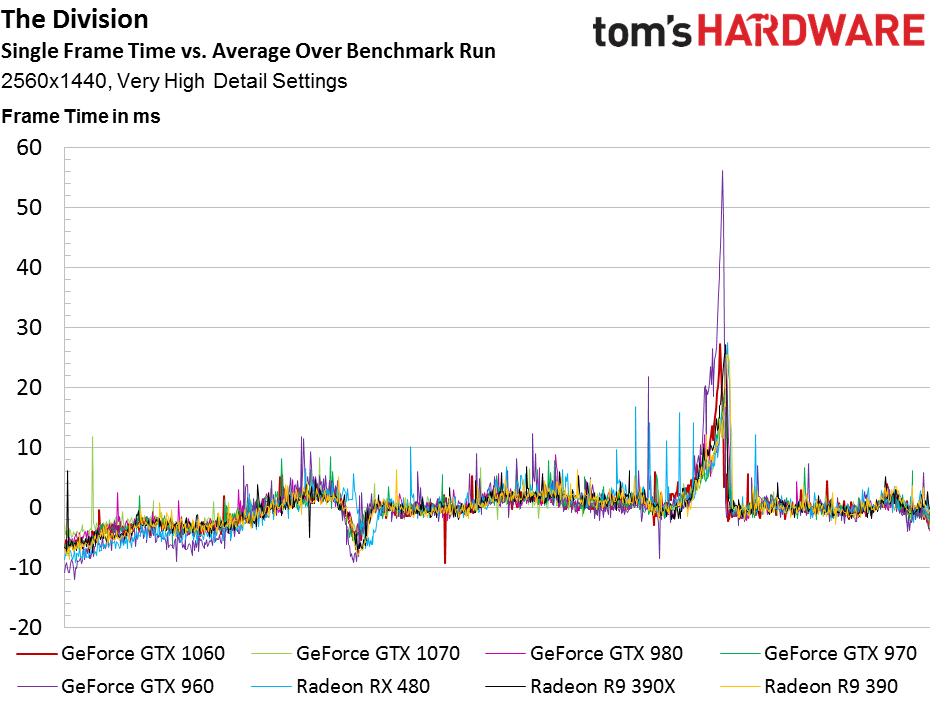
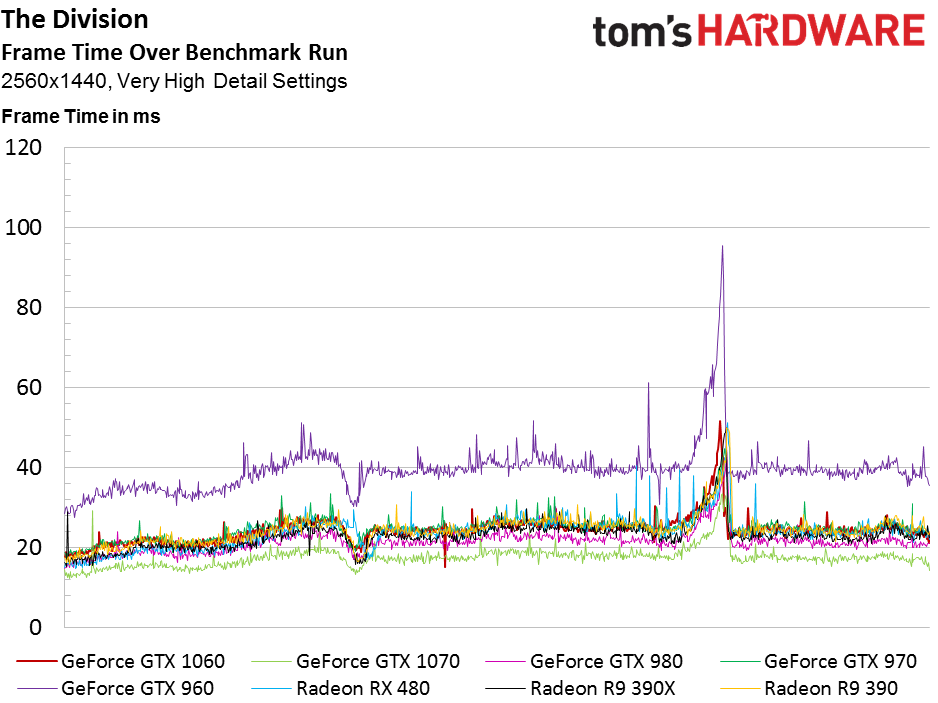
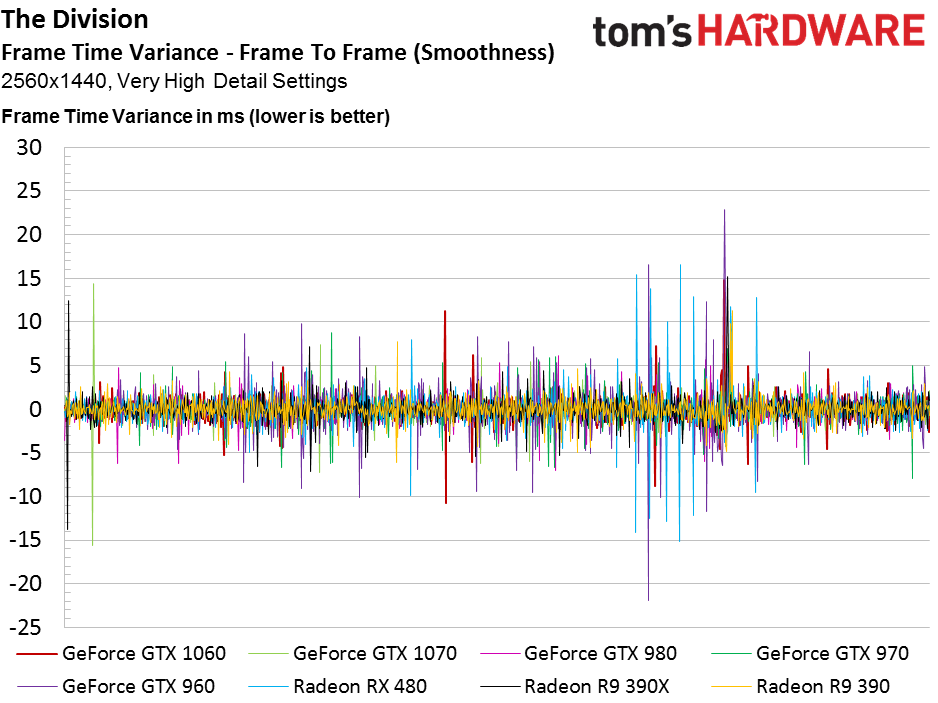
Jumping to 2560x1440 hits the 1060 harder, and it technically falls to sixth place in average frame rate. Based on our frame rate over time numbers, however, the 1060 runs right alongside the GTX 970, Radeon R9 390, and, to a lesser extent, the slightly faster RX 480. Even if Nvidia were to enable SLI across the PCI Express bus, it’s probable that two 1060s wouldn’t scale well above QHD based on what we see going from 1920x1080 to 2560x1440.
The Witcher 3
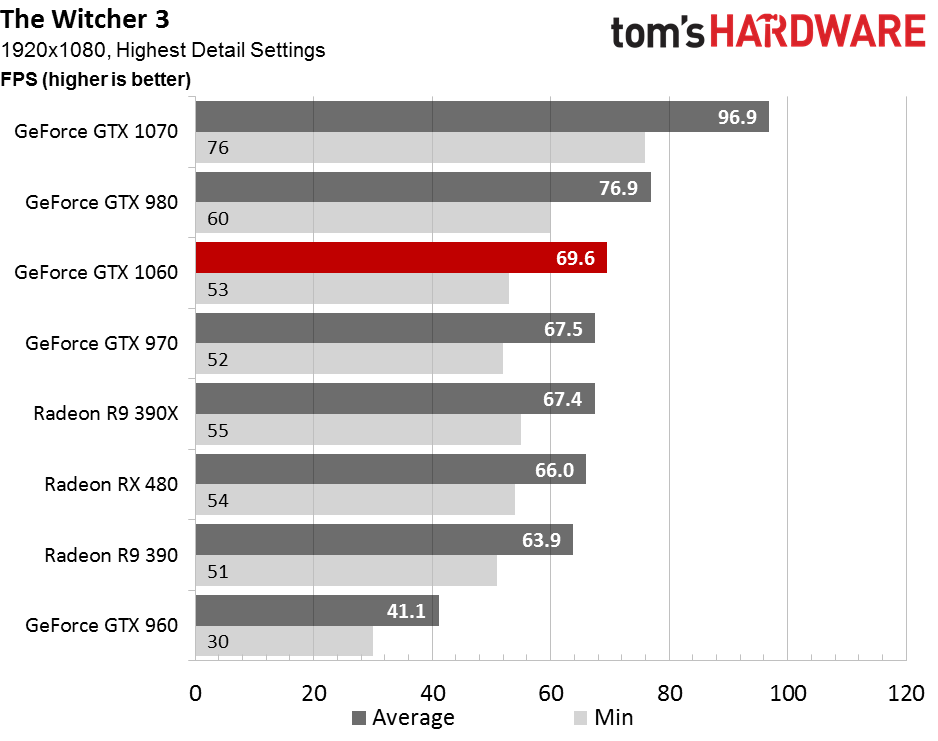
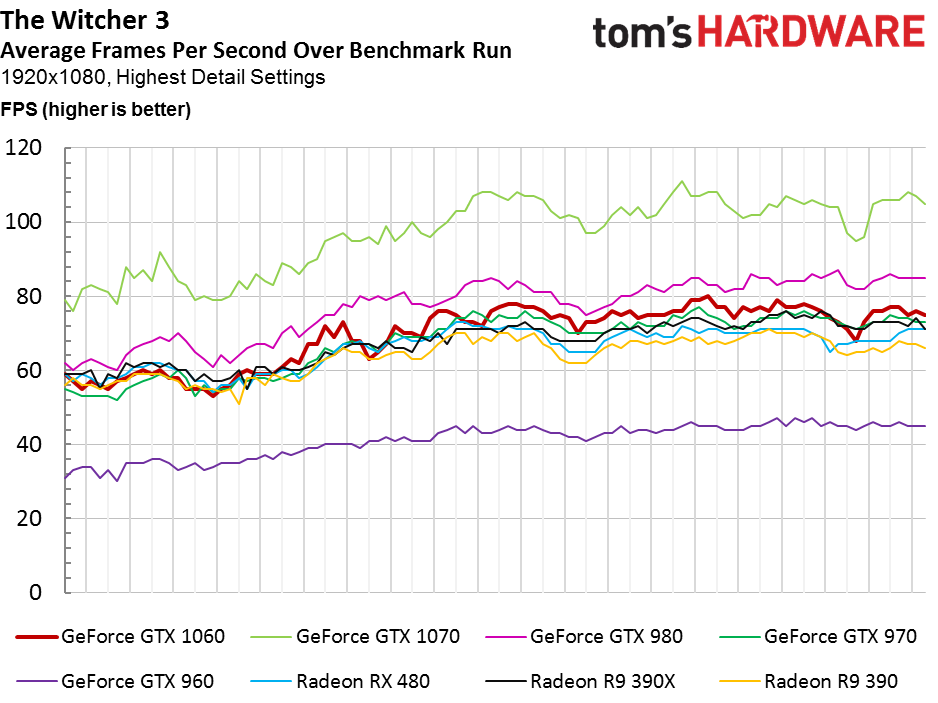
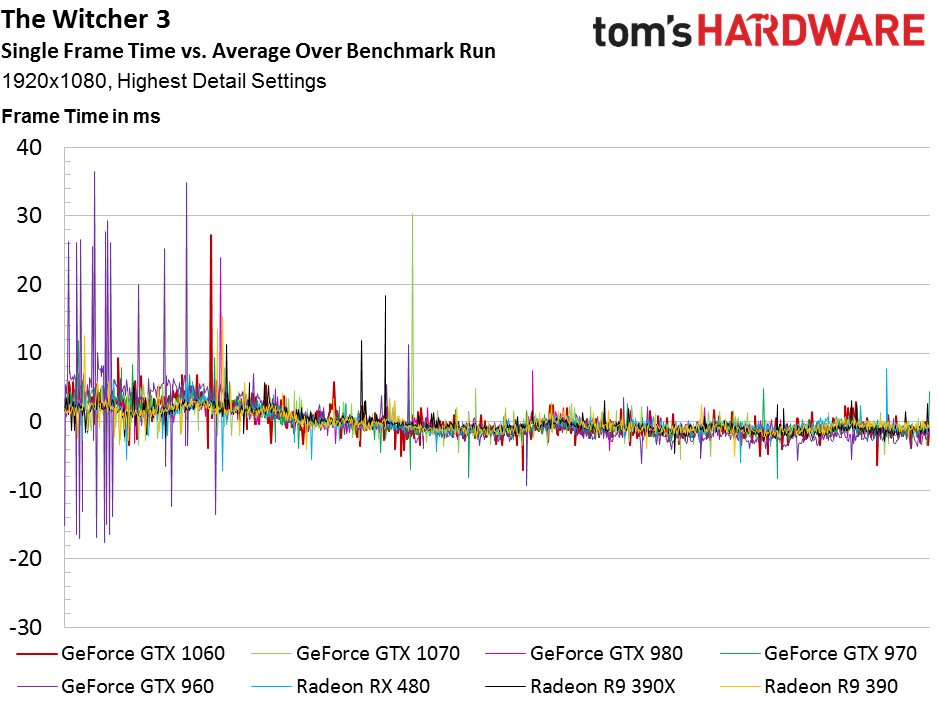
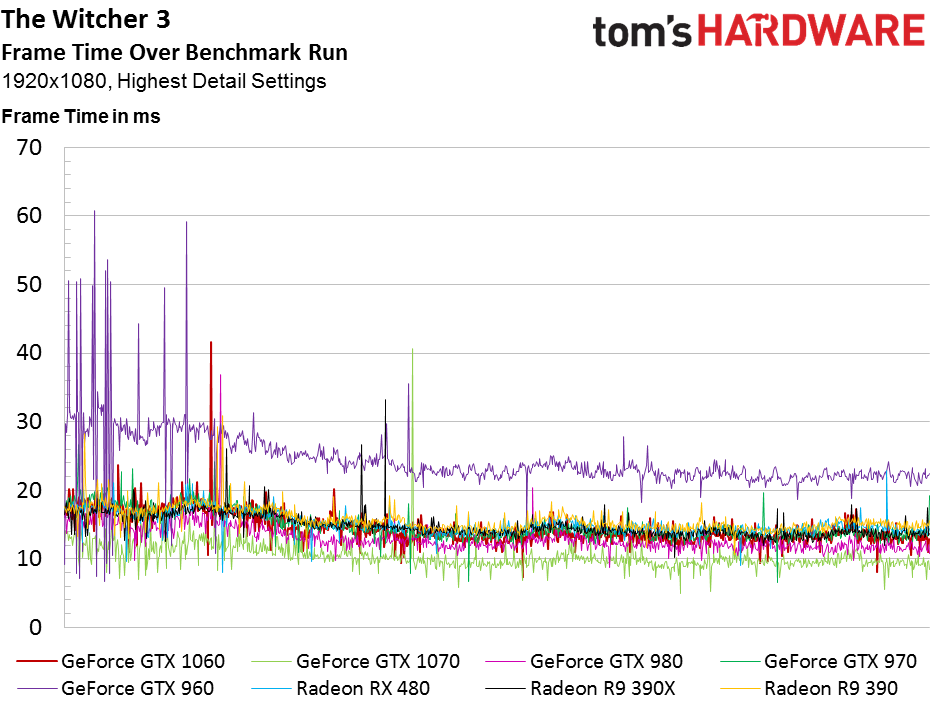
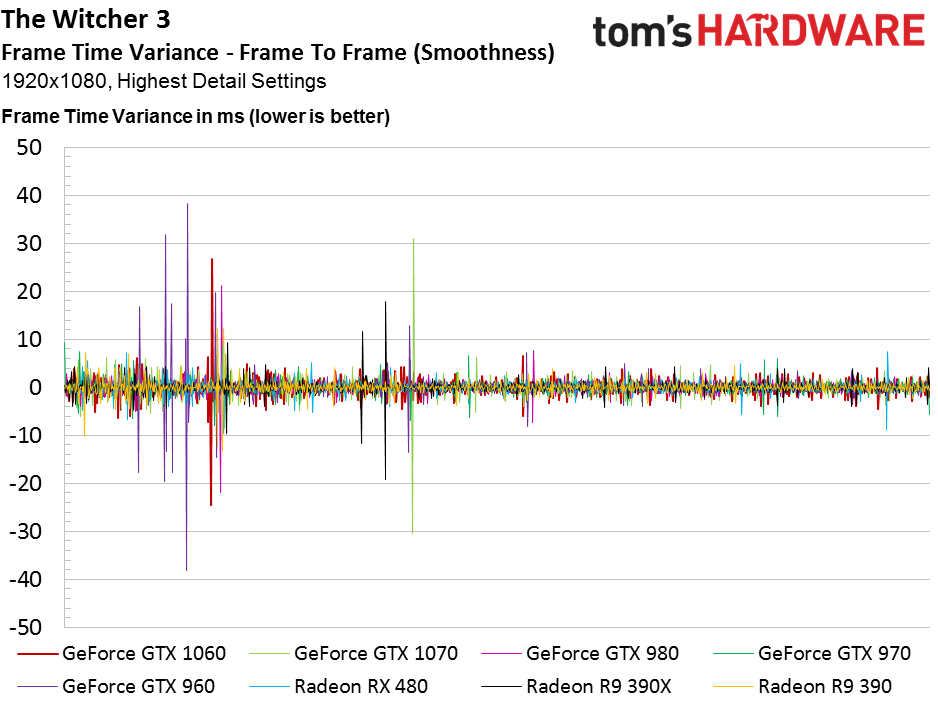
The Witcher 3 shows four GeForce cards in first through fourth place at 1920x1080, but there’s a big group between the GeForce GTX 1060 and Radeon R9 390 that occupy the same space when we look at frame rate over time. Pricing becomes a primary consideration in cases like these, and GeForce GTX 1060 (at least the Founders Edition card) lands on the wrong side of that equation.
Get Tom's Hardware's best news and in-depth reviews, straight to your inbox.
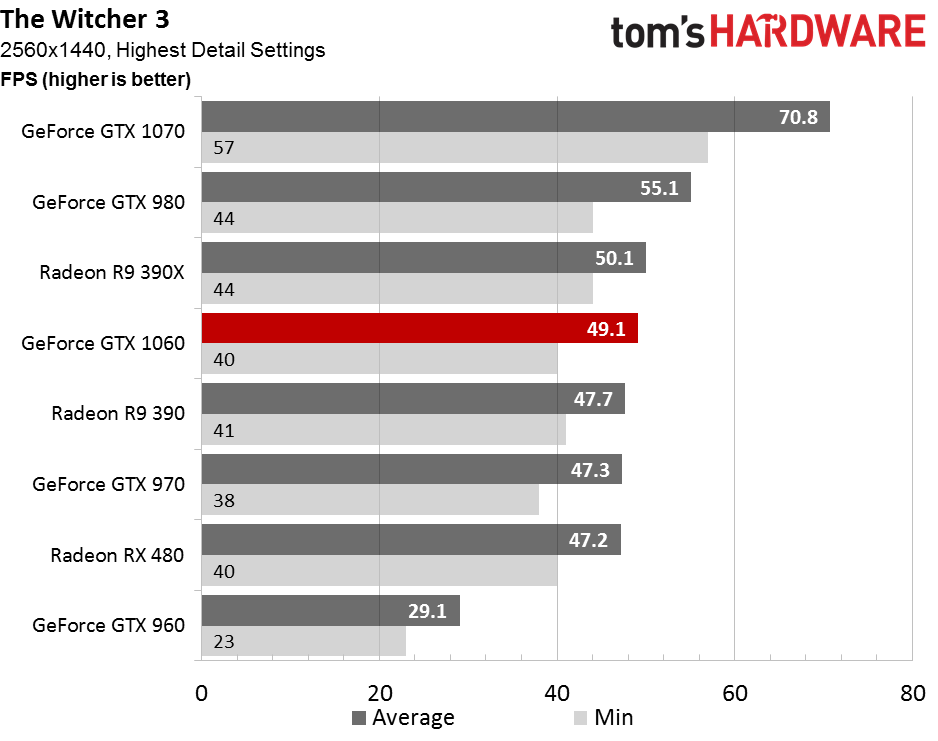
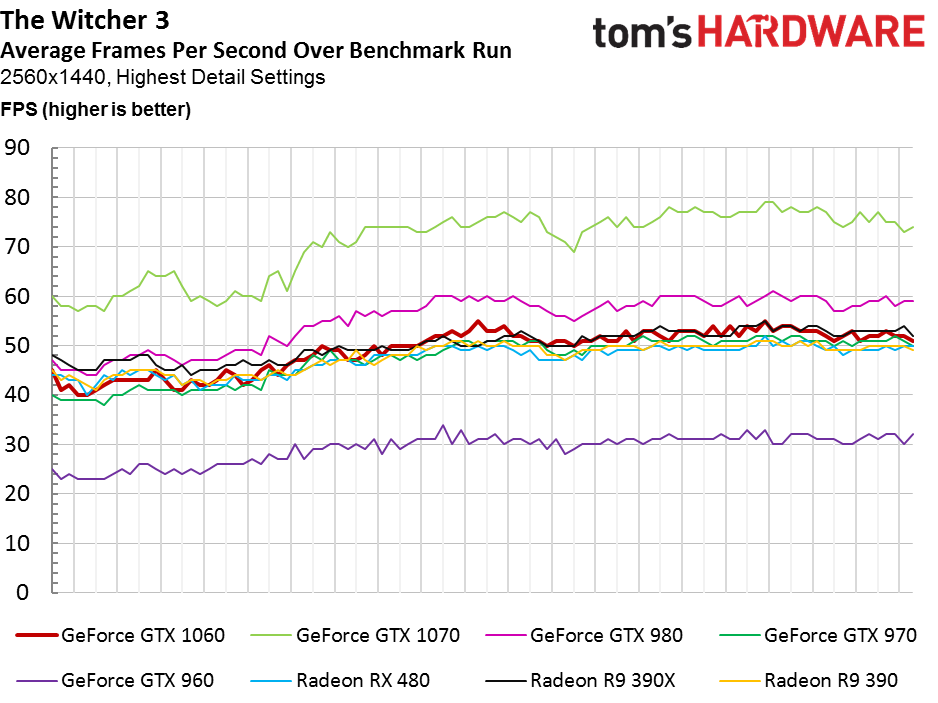
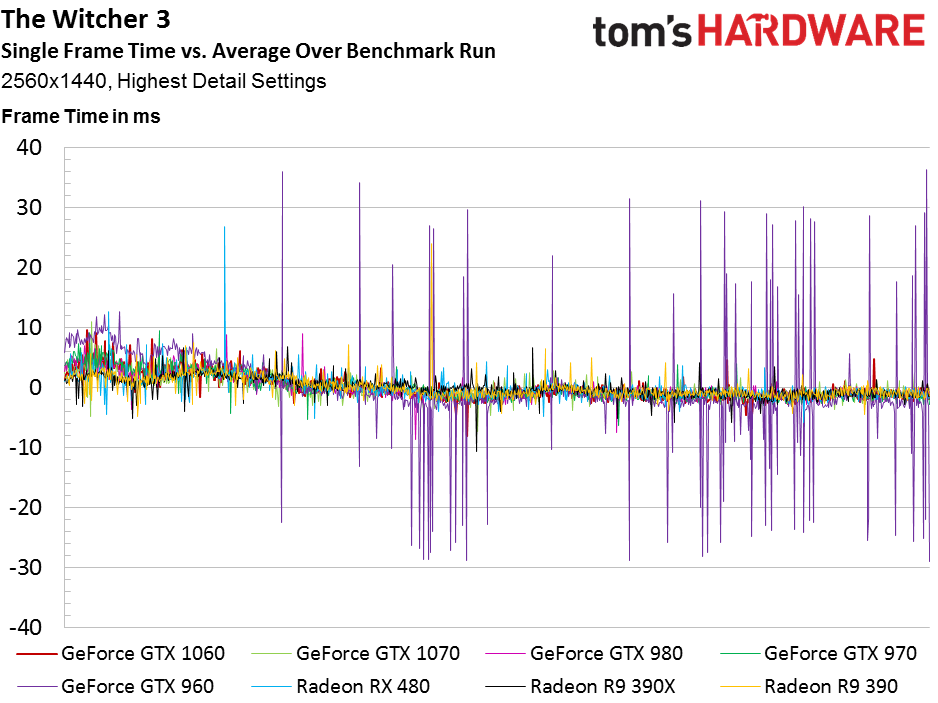
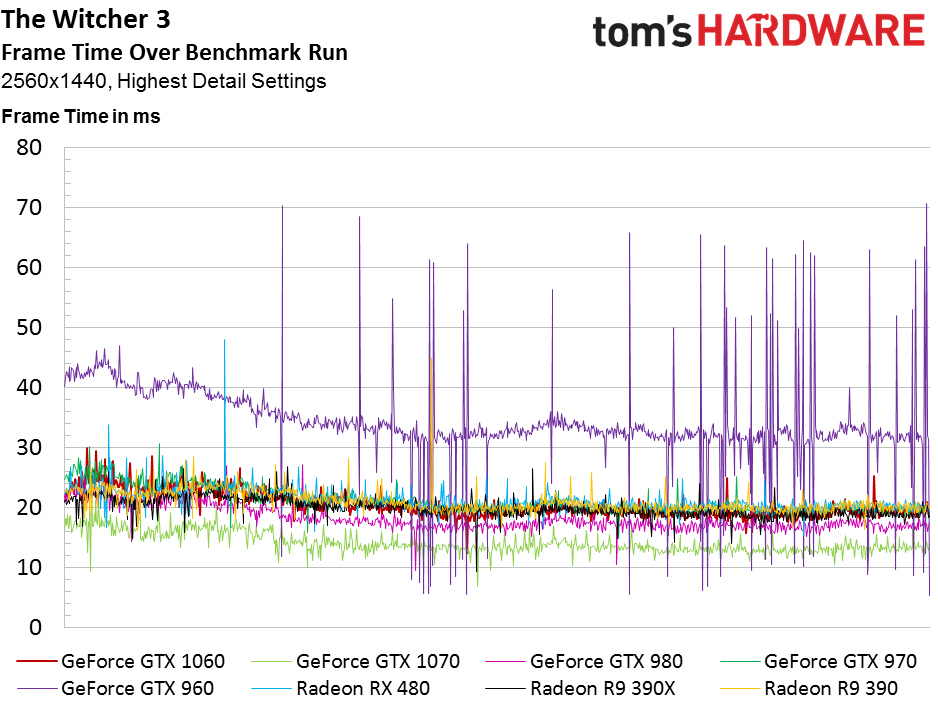
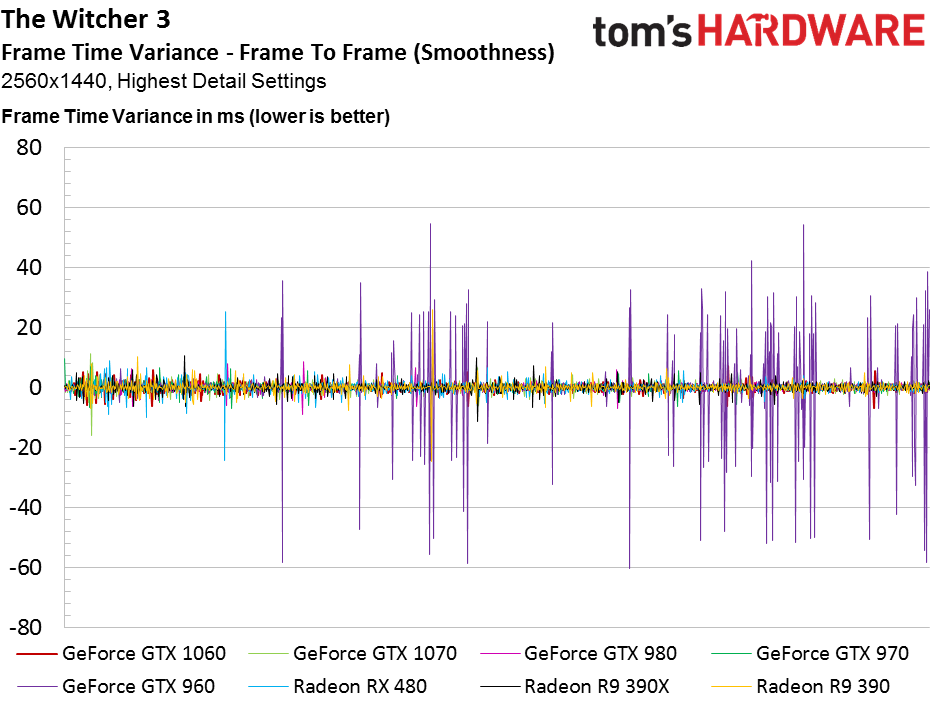
Another cluster of upper-mainstream graphics cards in the middle of our chart compels us to think about pricing once more. Multiple Radeon R9 390s sell for less than $300. The same goes for GeForce GTX 970. Partisanship aside, either of those options compare readily to a GeForce GTX 1060 Founders Edition at $300.
MORE: Best Graphics Cards
MORE: Desktop GPU Performance Hierarchy Table
MORE: All Graphics Content
Current page: Rise of the Tomb Raider, The Division & The Witcher 3
Prev Page Hitman, Metro: Last Light Redux & Project CARS Next Page Power Consumption Results-
Vosgy Well with it's price point above the 480 and performance performance difference relatively matching the price difference seems like it will come down to what someone can afford at the time.Reply
Guess I'll recommend either from now on.
Thanks for the review guys, pleasure as always :D -
mitch074 I wonder: with Battlefield 4, why not add the Mantle-enabled rendering path? All existing tests show it to be pretty much equivalent to DX12, and future high-performance, low-latency titles are much more likely to make use of DX12, Vulkan etc. than DX11 or OpenGL...Reply
On that review, as a matter of fact, you use pretty much only DX11 games and only one DX12 title; new API paths are available in Dota2, Talos Principle and Doom 2016... Why not include them, as a reference for the future of gaming, instead of only showing off DX11 games? -
LFCavalcanti You could have included in the value discussion the question about having 2 RX480 in Crossfire vs a single 1070, sort off denying a market place in value for the 1060.Reply
I don't know what NVidia is thinking... their marketing campaign might be stronger than I understand and people will still buy the 1060, but value on it just don't make sense right now. -
BrutalPigeon Where are DX12 reviews? Hitman DX12? Time Spy? 1060 gets rekt in DX12. Nvidia biased review again, also project Cars? How is this even a benchmark, obviously gimped for Radeons.Reply -
kicsako This review is kinda strange. You use Project Cars what is known of running so bad on AMD cards, yet there are no dx/vulkan 12 titles except AOTS. We already have Doom(Vulkan), and Total War+Hitman for dx12. This review is weirdly Nvidia biased. People who buy mid lvl cards are not going to change it for at least 2-3 years. And we will see more and more dx12/vulkan titles yet you only include dx11 games with mostly Nvidia support. Never gona read tomshardware ever again.Reply -
Myrmidonas Yes indeed. I read elsewhere on DX12 benchmarks GTX 1060 does not cope well against rx480. Also, why not DOOM?Reply
Long story short, if you have Win7 and don't plan to upgrade for the next 2-3 years you have a solid reason to get a GTX 1060. The "plot changes" in favor of RX480 if you are going all forward with Win10. -
logainofhades No SLI, on a card of this caliber. Quite the disappointment. Doesn't appear that it quite met the hype. Solid card, at its price point, but still not quite what was expected.Reply -
IceMyth What I understood from this review is either get 1070 or 1080 or RX 480... the 1060 is a waste of money and time since you cant SLI so what you will get will be fixed and to get better gaming you will need to replace the whole GPU to one of the 3 top.Reply
Honestly I expected something decent but seems they released a cheap GPU for NVidia fans rather than to compete with AMD performance and prices! -
AndrewJacksonZA Thank you for the review Chris! It was a pleasure to read high-quality writing with good English - my brain really thanks you! :-)Reply
I would also like to join others in their request for:
- including 2x RX480s in Crossfire (price-wise they are comparable to a 1070,)
- a benchmark using Doom's Vulkan rendering path, and
- results from the TimeSpy benchmark please.
Thank you again for a relaxing and informative read,
Andrew -
cknobman I'd say typical Nvidia cash grab.Reply
A. Card is priced about $50 too high as review kind of indicates.
B. SLI is removed because Nvidia wants you to spend more $$$$$$$ on their higher priced cards. They dont want people trying to achieve playable 4k resolution without paying that Nvidia premium tax.
Right now if I was buying to play 1080-1440 I'd go AMD 480 all the way.
